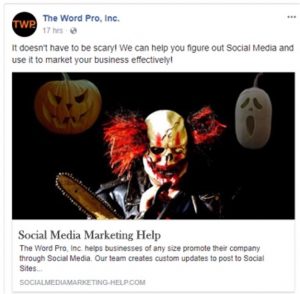Avoid email marketing missteps that can harm your reputation and deliverability. Stay on the right side of email laws and best practices.

What’s on your email rap sheet? In my last MarTech column, “Stop! Or go directly to email jail,” I listed 10 crimes that could send digital marketers to the email Big House — from misdemeanors like sending transactional emails without even a line of business-building promotional copy to felonies like buying a list or skipping authentication.
No discussion of email lawbreaking is complete without throwing a few jailhouse confessions into the mix to illustrate my point that all of us have committed some marketing infraction, either because we didn’t know any better, we were desperate or someone (like a boss) made us do it.
Those excuses might not fly with Judge Blocklist or Their Honor, the ISP. But I hope you take some comfort in knowing anyone could end up on Email’s Most Wanted list.
Everyone has something to fix
This is where many emailers turn into marketing miscreants. I’ve seen it happen often over my 26 years in email and working with companies of one or two people to international enterprises. Every company is different and everyone I meet needs some help.
I often end up as the company’s email lawyer — an outsider with a fresh perspective and wider understanding of what’s happened in the digital messaging universe. I’m unencumbered by office politics and dedicated to helping them succeed on the right side of the law.
I’ve witnessed my share of email misdeeds, some inadvertent, some deliberate and the work that goes into cleaning up those situations and bailing companies out of email jail. I’ll share just a few stories below. I hope they inspire you to improve your processes and establish goals to fix whatever might be skirting the law — whether it’s an actual statute like CAN-SPAM (in the U.S.), CASL (Canada) or the GDPR (in the EU) or a generally acknowledged best practice like permission.
4 confessions from email jail
1. Buying a list
While purchasing a list for email marketing is technically not against the law in the United States, it violates many email practices, such as permission and consent.
The confession
As an avid golfer, I was excited to work with a well-known golf equipment manufacturer. I soon learned the CEO had just paid a cool six figures for a list of millions of names and email addresses. And boy, were they excited about that!
In our first conversation, I heard huge predictions for what this massive list would mean for the business. They wanted me to help get their message out there and convert massive quantities of new customers.
It didn’t happen quite like that. Over the next two weeks, I met multiple times with company people and walked them through the hard metrics that showed how they had just lost all that money. Among those metrics was the upfront cost to validate all those millions of addresses on top of what the CEO spent to acquire them.
I also made it clear what they could expect for customer responses (not much), spam reports (a lot), sales (much less than they expected) and what it would do to their sending domains (major damage).
From that high six figures spent on the list, I said, you could expect to earn about $ 23,000. They disagreed. That was the end of my work with that company.
The lesson
I never heard whether they launched any campaigns using that unvalidated list, but it highlights one of the penalties of being in email jail. You’re paying for something that will never give you a ghost of the return you expect.
People buy and use email lists every day because it’s easy to do. They’re blind to the ramifications. But you know them now.
2. Emailing to unsubscribed addresses
One of my earlier employers was for a multichannel international retailer. We had a decent setup — an eight-member email team in-house and an extended agency team. But we were in retail, so we were going a mile a minute all the time and even faster during the holidays. We couldn’t help being tactic-driven email marketers. Our jobs were all about getting campaigns out the door.
CAN-SPAM had just become law in the U.S. My company met with the Federal Trade Commission, which administers the regulations of the CAN-SPAM legislation. Google’s Gmail was not yet the powerhouse it is today. Deliverability was a thing back then, but most of us were not as cautious about protecting it as we are today.
The confession
A colleague came into my office and shut the door. Panic-stricken, she confessed that she had just sent a major campaign to a custom list that included all our unsubscribed email addresses. Not just recent ones, all of them.
Having just met with CAN-SPAM, my panic mode went off the charts. We had just broken the law — not just a nice-to-have best practice. The. Law.
How did this happen? We didn’t follow a clear process to be sure we were sending to the right list. As it happened, the segmented list our data people pulled for her campaign included unsubs. We should have seen that the list was too large for the segments she had specified, but we missed that glaring detail in our haste to send.
So who had to spend time in email jail for that? Luckily, nobody. We got the equivalent of being let go with a warning. Nobody said anything. Spam complaints didn’t blow up. Nobody got fired. But that was 2004. If that happened today? I shudder to think.
The lesson
No matter how big your email program is or how fast you have to move, you must slow down and set up processes to keep these incidents from happening again.
I still get a little sweaty thinking about that, though.
3. Emailing hard-bouncing addresses
A friend worked for a B2B publisher with a combined email house list of about 100,000 addresses (probably 20% active). He and his boss noticed that opens and clicks were steadily declining while hard-bouncing (permanently undeliverable) addresses grew quickly. This accelerated after the recession of 2008 when many people in his industry were laid off as teams were downsized or eliminated.
The usual practice, as you know, is to remove hard-bouncing addresses and sequester them so you don’t email them and risk the wrath of the ISPs and blocklists. The company’s email platform removed those addresses automatically and sent them to a do-not-send list. As a result, emails were re-sent only to soft-bouncing addresses three times before those were removed.
The confession
So far, so good with the list hygiene process. But then the publisher got suspicious and wondered how many of those undeliverable email addresses were false positives or addresses incorrectly classified as undeliverable. Against the advice of just about everyone, he had the data team build a mailing list from the do-not-email file and send a newsletter to it.
The results? A couple of opens (maybe bots). A few clicks (again, maybe bots). No appreciable change in engagement. Enough “undeliverable” dings to get the sending IP added to at least one major blocklist and who knows how many ISP filters.
The lesson
If an email address comes back as undeliverable, believe it. The cost of checking on it just in case is too high.
4. Changing everything based on one campaign
In my work with another major national brand, somebody thought scraping the complex HTML template and sending one campaign as an all-text email would be a good idea. Why? Because he read about another brand doing that, and the click-through rate was off the charts.
Well, sure, it was high because the email was different. It’s a novelty. You get a boost from the attention because it’s a change from the normal template. That’s why it pops. You can create an effective campaign if you plan it carefully to take advantage of the one-off design.
The confession
The first few campaigns did well enough. But then the executive committed his first felony. He used the results from an isolated incident to change the entire program. As you might expect, the novelty wore off. The numbers declined. The email team went back to its HTML templates.
This led to his second trip to email jail, causing the program to lose money because he acted on faulty information.
The lesson
Always test and retest to validate your findings. Be sure what you’re testing with your hypothesis is accurate. Watch out for radical changes in which novelty influences the outcomes rather than a data-proven strategy.
Wrapping up
All this talk about email jail reminds us that email marketing has a set of rules, just as there are for any other marketing channel. You must play by them or face real consequences, such as being denied entry to the inbox.
In the early days, we could claim ignorance because we were all learning and many of the rules we follow today weren’t written back then. The penalties either didn’t exist or were less drastic. But ignorance of the law is no longer an excuse.
The thought leadership addressing these issues amounts to the world’s greatest email law library. It’s as close to you as the archives of MarTech or a search through Google.
As we look at the email madness of Q4 (yes, I just went there), you’re probably wondering how to stay out of email jail. Help is just a query away!
One thing I don’t recommend is something that kept me out of email jail back in the day: sending doughnuts to the ISP guards.
In my early career, AOL was one of the big mailbox providers we had to appease continually. In those early days of deliverability, senders had to be whitelisted to reach those inboxes. I knew the AOL Postmaster and would send her gift certificates to keep us on the “good” list.
Yes, it was bribery. And, no, don’t do this with today’s postmasters — unless you know their clothing sizes, favorite wine or kids’s ages. Eh, maybe not even then. Following the email rules is still your best bet to stay out of email jail.
The post Confessions from email jail appeared first on MarTech.
(10)
Report Post









